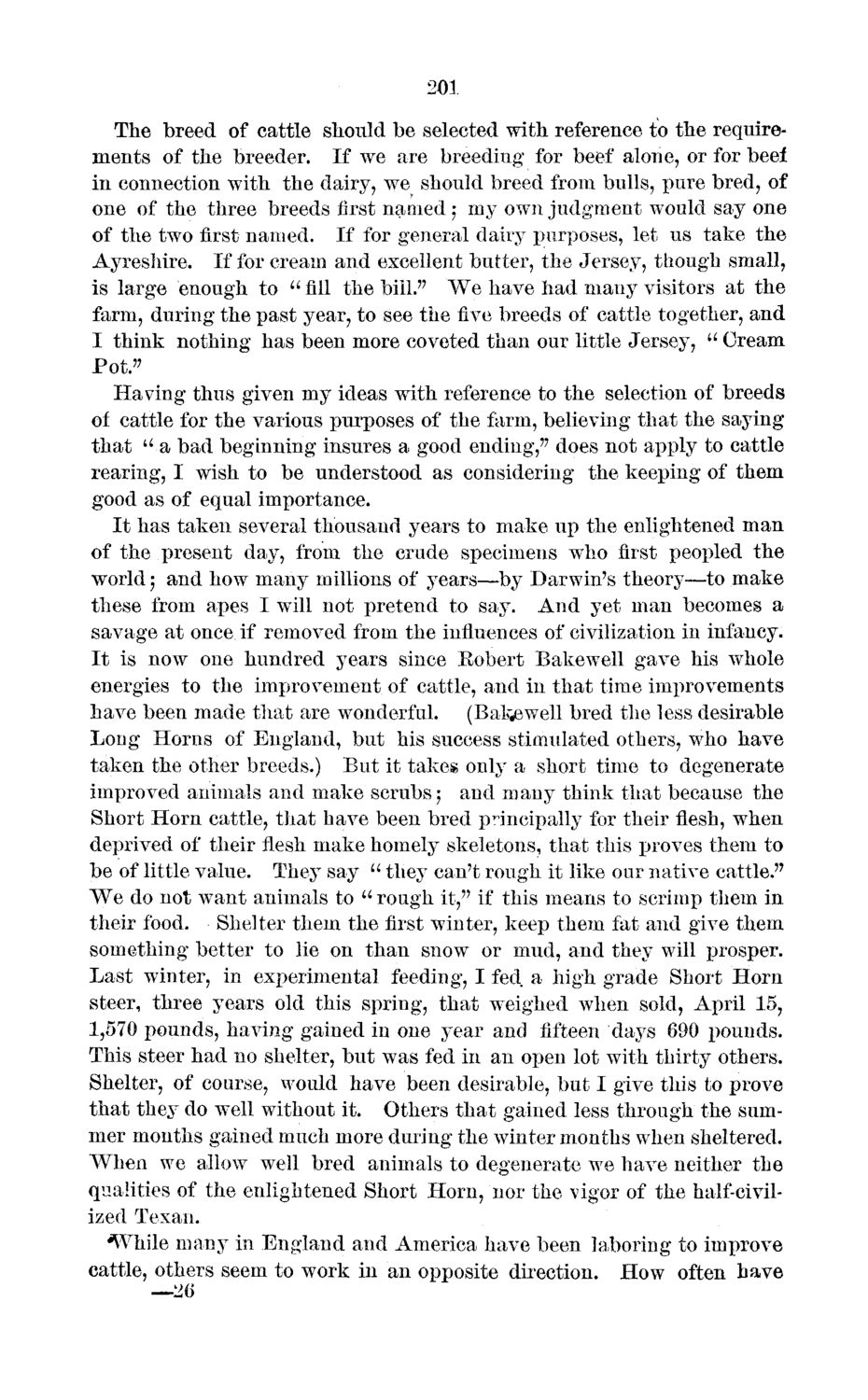| |
| |
Caption: Board of Trustees Minutes - 1873
This is a reduced-resolution page image for fast online browsing.

EXTRACTED TEXT FROM PAGE:
201 The breed of cattle should be selected with reference to the requirements of the breeder. If we are breeding for beef alone, or for beef in connection with the dairy, we should breed from bulls, pure bred, of one of the three breeds first named ; my own judgment would say one of the two first named. If for general dairy purposes, let us take the Ayreshire. If for cream and excellent butter, the Jersey, though small, is large enough to " fill the bill." We have had many visitors at the farm, during the past year, to see the iive breeds of cattle together, and I think nothing has been more coveted than our little Jersey, " Cream Pot." Having thus given my ideas with reference to the selection of breeds of cattle for the various purposes of the farm, believing that the saying that u a bad beginning insures a good ending," does not apply to cattle rearing, I wish to be understood as considering the keeping of them good as of equal importance. It has taken several thousand years to make up the enlightened man of the present day, from the crude specimens who first peopled the world 5 and how many millions of years—by Darwin's theory—to make these from apes I will not pretend to say. And yet man becomes a savage at once if removed from the influences of civilization in infancy. It is now one hundred years since Eobert Bake well gave his whole energies to the improvement of cattle, and in that time improvements have been made that are wonderful. (Babewell bred the less desirable Long Horns of England, but his success stimulated others, who have taken the other breeds.) But it takes only a short time to degenerate improved animals and make scrubs; and many think that because the Short Horn cattle, that have been bred principally for their flesh, when deprived of their flesh make homely skeletons, that this proves them to be of little value. They say " they can't rough it like our native cattle." We do not want animals to " rough it," if this means to scrimp them in their food. Shelter them the first winter, keep them fat and give them something better to lie on than snow or mud, and they will prosper. Last winter, in experimental feeding, I fed a high grade Short Horn steer, three years old this spring, that weighed when sold, April 15, 1,570 pounds, having gained in one year and fifteen days 690 pounds. This steer had no shelter, but was fed in an open lot with thirty others. Shelter, of course, would have been desirable, but I give this to prove that they do well without it. Others that gained less through the summer months gained much more during the winter months when sheltered. When we allow well bred animals to degenerate we have neither the qualities of the enlightened Short Horn, nor the vigor of the half-civilized Texan. While many in England and America have been laboring to improve cattle, others seem to work in an opposite direction. How often have —26
| |